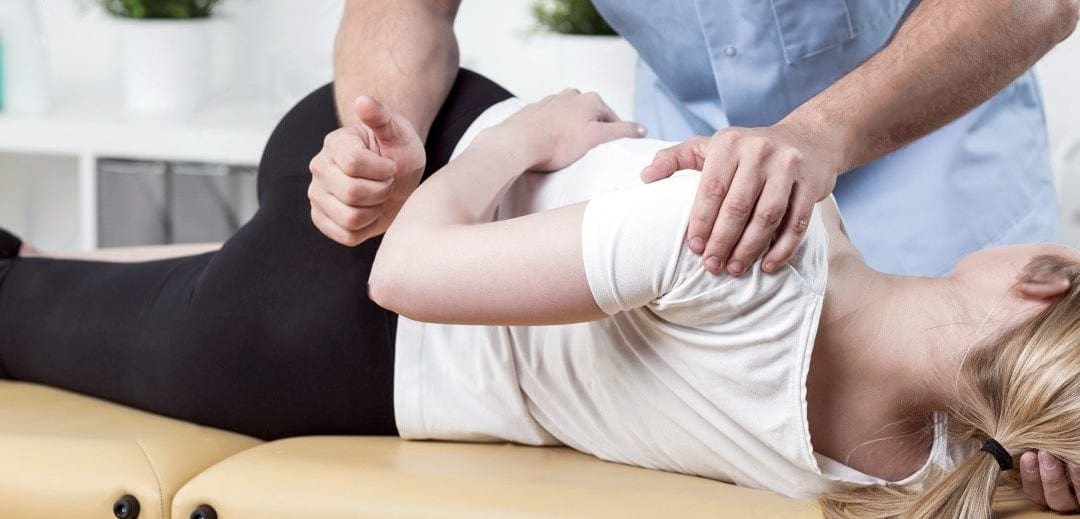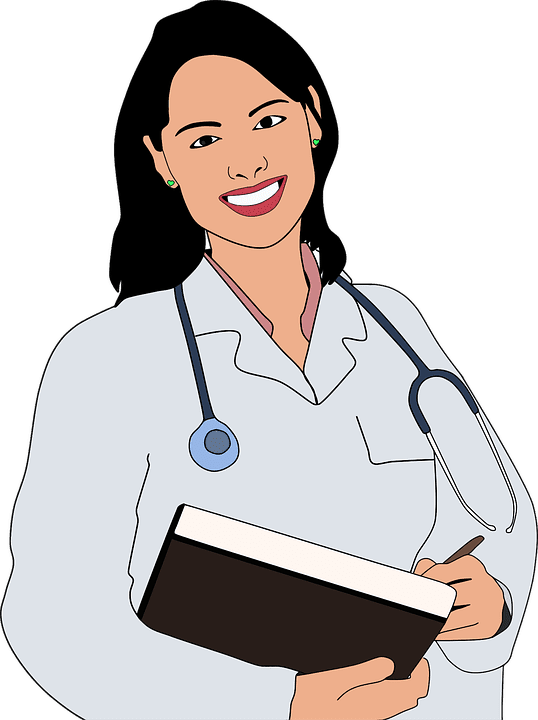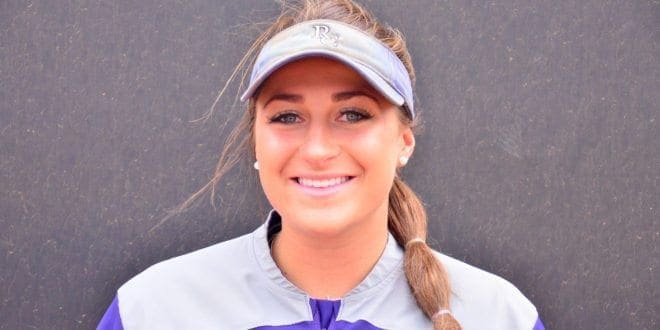
by Dr Alex Jimenez DC, APRN, FNP-BC, CFMP, IFMCP | Chiropractic, Natural Health, Wellness
An assortment of diverse and difficult health conditions can be helped by a chiropractors in El Paso. Patients usually only associate chiropractic care with back problems, but in reality chiropractic can be helpful for the entire nervous system and musculoskeletal system.
Treating mild to severe headaches is probably not a thing most people think chiropractors can help, however,�that and many other conditions are pretty common to see in our office. Naturally the sources of headaches can vary and many things could be the trigger or cause. It’s important to remember that any kind of pain which causes us to alter our natural posture or the way we walk requires professional care or treatment.
Therapeutic stretches and exercises can be given by a chiropractor which will help you avoid the same issues later on. Many chiropractors also offer lifestyle recommendations and nutrition that you can utilize to help improve your condition.

No matter what affliction or health problem you’re dealing with you want to have the best treatment solution. Having a precise diagnosis is the first step. Giving our doctor as much information as possible is critical. Providing us with a complete health history is an important first step.
If we cannot take care of your problem or help with the pain you are going through, we will take steps to point you to another healthcare provider. Our treatment methods can certainly be carried out in conjunction with various other medical treatments, thus giving a more holistic approach to musculoskeletal problems.
Selecting the right chiropractor can seem difficult, but it needn�t be when you stick to a couple of easy guidelines. If possible a referral from a good friend or co-worker can be a very smart way to find a good connection. Find a doctor that you can communicate well with and you’re well on your way.

Call Today!

by Dr Alex Jimenez DC, APRN, FNP-BC, CFMP, IFMCP | Integrative Functional Wellness, Integrative Medicine, Natural Health, Wellness
Conventional medicine is necessary to cure disease, but if you really want to stay healthy, you should incorporate treatments from the field of need to incorporate curing illness, but if you want to stay as healthy you should incorporate practices from the field known as integrative medicine as well, a top expert says.
“The field of integrative, or complementary, medicine, grew out of what used to be known as ‘alternative health,’ but the concepts we use today are based on scientific evidence,” Dr. Ashwin Mehta tells Newsmax Health.
Conventional medicine, known also as Western medicine, is a system in which medical doctors and other healthcare professionals treat symptoms and diseases using such means as drugs, radiation or surgery.
In contrast, the term “alternative medicine” describes a range of medical therapies that are not regarded as orthodox by the medical profession, such as herbalism, homeopathy, and acupuncture.
“In the 1970s, the alternative medicine gained traction in the U.S. as a pushback against the biochemical paradigm that was becoming associated with medicine,” says Mehta, medical director of integrative medicine at Memorial Healthcare System in Hollywood, Fla.
“But, on the other hand, the realization was growing that there might be something of value in these ancient healing traditions, and so we should scientifically evaluate them.”
When some alternative therapies were held up to this scrutiny, they were found to be baseless, says Mehta. On the other hand, others were found to be valuable. These have since been known as integrative, or complementary therapies, he adds.
“Integrative medicine uses only the therapies that have been found to have scientific validity,” says Mehta.
He likes to explain this concept by using an example in cancer treatment.
“If the body is a garden and cancer is an unwelcome weed, the job of the oncologists (cancer doctors) is pluck out the weed and our job is to make the soil of the garden inhospitable to the weed ever coming back,” he says.
One of the most valuable adjuncts that integrative medicine offers today’s patient is the ability of these therapies to reduce inflammation.
Inflammation is the same reddening process you see if you cut your finger. But there also is an invisible type of inflammation, known as “chronic bodily inflammation,” which occurs inside your body and cannot be seen.
Such inflammation is increasingly viewed as the culprit in the development of cardiovascular disease, diabetes, and cancer as well, notes Mehta.
“Today, we use the term ‘metabolic syndrome,” to describe a number of conditions, including high cholesterol, high blood sugars, high blood pressure and obesity, that increase the risk of cardiovascular disease, diabetes and cancer,” says Mehta.
What these conditions have in common is that they cause a “predominance of inflammation,” he adds.
To combat inflammation, follow these 5 principles of integrative medicine, he says:
Use food as medicine: Much of our medication, from aspirin to chemotherapy, has been derived from leafy plants, so it makes sense to use them in cooking. Green tea, turmeric and cinnamon have anti-inflammatory properties.
Use food to strengthen your immune system: The Mediterranean Diet is anti-inflammatory because it features a largely plant-based diet that focuses on vegetables, nuts and seeds, cold-water fish and healthy herbs and spices.
Get a good night’s sleep: During REM sleep, the body’s temperature dips slightly (about 1 ½ degrees) creating a cooling effect that helps reduce inflammation. If you have trouble sleeping, check your caffeine intake and turn of “screens,” in your room that can disrupt your melatonin levels. (Melatonin is the “sleep” hormone). This means TV’s, tables, and smart phones. Aromatherapy, the use of essential oils, can also create a restful environment.
Consider cxercise as medicine: A sedentary lifestyle impairs circulation over time, contributing to physical deconditioning that gives rise to obesity and osteoporosis and also increases the risk of high blood pressure and diabetes.
Practice meditation. A daily period of meditation has been found to strengthen the mind-body connection.

by Dr Alex Jimenez DC, APRN, FNP-BC, CFMP, IFMCP | Chiropractic
This article originally appeared on Time.com.�
Evidence keeps mounting that exercise is good for the brain. It can lower a person�s risk for Alzheimer�s disease and may even slow brain aging by about 10 years. Now, new research helps illuminate how, exactly, working out improves brain health.
In one research review published in the British Journal of Sports Medicine, researchers examined 39 studies that looked at the link between exercise and cognitive abilities among people over age 50. They found that aerobic exercise appears to improve a person�s cognitive function and resistance training can enhance a person�s executive function and memory. Other exercises like tai chi were also linked to improvements in cognition, though there wasn�t as much available evidence. Ultimately, the researchers concluded that 45 minutes to an hour of moderate-to-vigorous exercise was good for the brain.
�There is now a wide body of research showing that the benefits to the body with exercise also exist for the brain,� says study author Joe Northey, a PhD candidate at the University of Canberra Research Institute for Sport and Exercise in Australia. �When older adults undertake aerobic or resistance exercise, we see changes to the structure and function of areas of the brain responsible for complex mental tasks and memory function.�
RELATED:�Here’s What Playing an Instrument Can Do for Your Brain
But how does exercise have these effects? Another new study presented at the American Physiological Society�s annual meeting in Chicago explored one possible way. In the study, researchers from New Mexico Highlands University found that when people walk, the pressure of making impact with the ground sends waves through the arteries, which increase blood flow to the brain (also called cerebral blood flow). Getting enough blood to the brain is important for healthy brain function, since blood flow brings the brain oxygen and nutrients.
In the small study�which has not yet been published�researchers used ultrasounds to assess arteries and changes in cerebral blood flow in 12 healthy young adults while they were standing, walking and running. The increases in blood flow were greater when the men and women ran, but walking was enough to spur the effect. �[Increased cerebral blood flow] gives the brain more to work with,� says study author Ernest R. Greene, a professor of engineering and biology at New Mexico Highlands University. �It�s another positive aspect of exercise.�
Scientists are still exploring multiple ways by which fitness improves the brain. But blood flow is a promising path, since it can also help create new brain cells. The protein BDNF (brain-derived neurotrophic factor) also seems to play a role because it helps repair and protect brain cells from degeneration. Exercise can also boost mood by triggering the release of feel-good hormones and chemicals, like endorphins, which can improve brain health. A 2015 study found that exercise may be able to prevent the onset of depressive symptoms.
�Each type of exercise seems to have different effects on the growth factors responsible for the growth of new neurons and blood vessels in the brain,� says Northey. �That may indicate why doing both aerobic and resistance training is of benefit to cognitive function.�

by Dr Alex Jimenez DC, APRN, FNP-BC, CFMP, IFMCP | Chiropractic
Related Articles
The UTEP softball team will continue its 2017 campaign with a trip to Conference USA West Division foe UAB April 29-30. The Miners (11-31, 5-13 C-USA) are coming off their bye week, while the Blazers (16-29, 7-9 C-USA) are coming off a loss at Middle Tennessee on April 22.
The Miners and Blazers will play a doubleheader starting at 1 p.m. CT/Noon MT on Saturday, while the series finale will be played on Sunday (1 p.m. CT) at Mary Bowers Field.
The weekend series in Birmingham will be the first of six final regular season games leading up to the C-USA Tournament May 10-13 in Hattiesburg, Miss. UTEP will close out the regular season against the defending C-USA Champions Florida Atlantic May 6-7.
MINERS FOLLOWING A BYE WEEK
UTEP is 4-2 the last two seasons following a bye week. In the 2015, following three losses at no. 25 UABMarch 14-15, the Miners responded by winning two of three against Southern Miss in El Paso (March 28-29). Last season, UTEP won two of three at Middle Tennessee (April 16-17). UTEP did not have a bye week in 2014 as it was scheduled to play at Colorado State in a three-game set April 5-6.
POSTSEASON PICTURE
UTEP is currently on the outside looking in the postseason outlook. Marshall (15-3 C-USA East) and LA Tech (13-5 West) have clinched spots while there are six spots remaining for the C-USA Tournament. The top three programs in each division will clinch a spot and the next two schools with the best record will seal the final two spots.
FIU (11-6 East), Florida Atlantic (10-8 East), North Texas (11-10 West) and UAB (7-9 West) are the next best four teams regarding league record, while WKU (10-10) and UTSA (9-12 West) would clinch spots if regular season ended today. Charlotte (7-10 East), Southern Miss (7-13 West), Middle Tennessee (5-11 East) and UTEP round out the list.
LAST SERIES
UTEP lost three contests at LA Tech April 14-15. The Miners fell in a pair of close contests on Friday, 4-2 and 4-0. The Lady Techsters took game three 8-0 in five. Taylor Sargent kept a hot bat as she hit .375 (3-8) with a double and a two-run triple. Kaitlin Ryder hit .333 with a run scored, while Lindsey Sokoloski also hit .333 and did not strikeout during the weekend.
ALL-TIME SERIES VS. UAB
The Blazers are 21-9 all-time against the Miners since May 6, 2006. UTEP has lost its last nine contests against UAB (April 20, 2013-April 24, 2016). UTEP last defeated UAB on April 22, 2012 in El Paso by the score of 7-0. The Miners were swept last season by the Blazers in El Paso. Cortney Smith went 4-for-10 with a pair of home runs and four RBI, while Courtney Clayton hit .545 (6-11) with a long ball and a pair of RBI.
UAB pulled away late in game one with the score knotted at 1-1 through four innings. The Blazers scored five in the fifth, three in the sixth and another run in the seventh to claim victory.
The Miners and Blazers slugged one out in game two as both squads each recorded 12 hits. The Miners took an early 3-0 lead after a Danielle Pearson RBI double and a Smith two-run single in the first frame. After UAB took a 4-3 lead, the Miners would tie the score in the second on a Kaitlin Ryder solo home run. After the Blazers took a 7-5 lead after three frames, Kiki Pepi scored on an error in the fourth that brought the Miners within a run.
But the Blazers used two runs in the seventh to put the game away. The Miners would go on to lose a heartbreaker in the series finale as UAB scored three runs in the seventh to claim a 4-2 victory. Following a run by the Blazers for a 1-0 edge in the fourth, the Miners would score runs in the fifth (Smith solo home run) and the sixth (Hope Moreno RBI single) for a 2-1 advantage.
UTEP is also 2-13 all-time in Birmingham, as the Miners took two of three from the Blazers during the 2009 season.
SCOUTING UAB
The Blazers are coming off a pair of losses, the first to no. 9/10 Washington, 6-0, on April 20 and another to at Middle Tennessee, 3-1, on April 22. UAB and Middle Tennessee were rained out on April 23 and rescheduled the two-game set for May 3 in Murfreesboro.
UAB is 16-29 overall and 7-9 in Conference USA. The Blazers are 8-9 on their home field and 3-2 in their last five home games � won two of three against North Texas (April 14-15), defeated Samford 4-3 [8] (April 18) and fell to Washington.
UAB ranks last in the conference with its .219 batting average, while its 132 runs are the least. UAB ranks eighth in the ERA (3.55) and walked a league-high 188 batters but have struck out 223 (ranked fourth in C-USA). UAB also ranks last in slugging (.314), on-base percentage (.298), hits (258) and RBI (114). The Blazers rank last in fielding percentage (.949) while their errors (73) are the most in the league. UAB has turned 22 plays, the third most in C-USA. Analyse Petree leads the team with a .278 batting average, while Madison Millsaps leads the squad in RBI (17).
Joanna Fallen and Millsaps each lead the team with five home runs apiece; Petree leads in doubles (seven) and Destini England leads the squad in runs (20) and hits (38). Claire Blount (7-10) leads the staff in wins, ERA (2.84), walks (88), innings (138.0) and Ks (114). Blount�s 114 strikeouts rank tied fourth in C-USA. Cara Goodwin (4-11) has a 3.85 ERA in 91.0 frames of work with 37 BBs and 70 Ks.
#TURNUP
UTEP turned three more double plays at LA Tech during Easter Weekend. The Miners lead Conference USA with 27 double plays turned, while they rank second nationally in double plays per game (.64) behind Auburn (.77). Auburn as turned a national-best 36 double plays, while Campbell has turned 29. UT Arlington has been part of 28 double plays, and UTEP and UC Riverside have turned 27 each.
Taylor Sargent andCourtney Clayton have each been part of 12 DPs to rank tied fourth with Florida Atlantic�s Lauren Whitt.Cortney Smith (11) ranks tied seventh with LA Tech�s Katie Smith and Kiki Pepi (10) is tied ninth with three other players.
SECOND MOST DOULBE PLAYS
UTEP�s 27 double plays turned in 2017 is already the second most turned in program history. Last season�s squad turned a program-best 30 double plays. In fact, since Tobin Echo-Hawk arrived to UTEP, the Miners have turned 96 doubles plays in 201 games (.48 per game).
The 2007 squad turned 21, while 19 double plays were turned during the 2005 season. The previous four seasons (2010-13), 46 double plays were turned.
BAT GIRLS
UTEP is hitting .299 to rank fourth in Conference USA and no. 58 nationally, while it would rank the third best average in program history if the season ended today. UTEP hit .307 in 2016 and .303 in 2007. UTEP�s slugging (.415) ranks fifth, while its hits (342) rank sixth. Marshall leads C-USA in batting (.321), while UTSA leads with 396 hits.
UTEP RANKINGS IN C-USA ONLY GAMES
The Miners rank second in batting average (.308) and hits (152) in Conference USA games only behind UTSA (.310 average & 181 hits). UTEP ranks fifth in runs scored (76), on-base percentage (.363), RBI (73) and fourth in total bases (200). UTEP ranks third in slugging (.405). LA Tech leads the way in runs scored (96) and RBI (89).
EXTRA BASE HITS
UTEP tallied a triple and double at LA Tech. The Miners rank fourth in Conference USA with 10 triples and seventh with 49 doubles. The Miners rank third in C-USA and no. 49 nationally with .24 triples per game.
Binghamton leads the nation with .49 triples per game and Florida State leads the nation with 20 triples (.42 per game). Marshall and LA Tech are tied for the lead league with 12 triples and Southern Miss (11) ranks third.
5 IN THE TOP 25
UTEP has five players ranked in the top 25 in Conference USA in batting. Taylor Sargent (.351) ranks 13th,Kaitlin Ryder (.350) ranks 14th, Kiki Pepi (.339) ranks 15th, Cortney Smith (.336) ranks 16th, andCourtney Clayton (.315) ranks no. 25.
UTEP has the most players in the top 25, while Marshall, Charlotte, North Texas and FIU each have three. Middle Tennessee and UTSA each have two. Florida Atlantic, WKU, LA Tech and Southern Miss each have one.
RACKING UP HITS
The Miners have connected on 342 hits, ranking sixth in Conference USA. UTEP�s 17 hits at UTSA (April 1) are tied for the most during the Tobin Echo-Hawk era, as 17 hits were recorded against Incarnate Word on Feb. 11, 2016. The 17 knocks are tied for eighth on the all-time list. Last season, the Miners set a single-season record with 451 knocks.
MORE ON THE HIT PARADE
UTEP has recorded 10-plus hit games 79 times during the Tobin Echo-Hawk era. The previous four seasons, the Miners tallied 10-plus hits in 50 contests. Since Echo-Hawk took the helm at UTEP, the Miners are hitting .298 (1,611-5,415), while the previous four years saw a .268 average (1,462-5,462). The Miners have connected on 15-plus hits in 14 different contests from 2014-17 and eight different times from 2010-13. The most hits recorded the last eight seasons were 24 at Brown on March 3, 2012 � tied most in program history.

by Dr Alex Jimenez DC, APRN, FNP-BC, CFMP, IFMCP | Crossfit, Fitness
Don�t get us wrong: We love trying out the latest boutique studio classes, busting through solid strength routines at the gym, and sweating it out on the treadmill. But these certainly aren�t the only ways to get active; and some days a full hour of exercise just isn�t in the cards. Luckily, you don�t need a fancy fitness membership or lots of free time to become your best, fittest self.
In fact, it�s possible to complete a super-effective fat-burning workout in less than 30 minutes, in your own living room. High-intensity interval training (HIIT) is one of the most efficient ways to whip your body into top shape.
RELATED: 5 Basic Moves to Get Started with Pure Barre at Home
What is HIIT, exactly? It�s a cardio interval workout technique that generally involves 20-30 second bursts of full-on effort, followed by short recovery periods. These workouts get your heart pumping, sculpt muscle, and burns massive amounts of calories, even after your workout has ended. Plus, HIIT workouts are rarely more than 20 minutes long. So they�re ideal when you want to sneak a quick but serious workout into your busy schedule.
Sold? Follow along with this 20-minute HIIT workout led by Fhitting Room trainer Dara Theodore. It�s a heart-pumping sequence you can do anytime, anywhere�with dumbbells or simply your own body weight.
(Bonus: Check out this workout playlist that�s perfect for any HIIT workout.)

by Dr Alex Jimenez DC, APRN, FNP-BC, CFMP, IFMCP | Diets, Fitness
Upping the intake of soy protein may help fight inflammatory bowel disease (IBD), say Penn State researchers whose study included both mice and cultured human colon cells.
Inflammatory bowel diseases, which include ulcerative colitis and Crohn’s disease, are characterized by either continuous or periodic inflammation of the colon and are a significant risk factor for colon cancer.
For their study, researchers removed protein sources from the diets of the mice and substituted soy-protein concentrate. The soy equaled about 12 percent of their diet.
“We didn’t want to get carried away with using doses that were really high and would crowd out all the other protein that was there,” said researcher Zachary Bitzer. “Instead, we wanted to find a scenario that was going to fit into a more human-relevant situation.”
The dietary soy-protein at the 12-percent dose level improved body-weight loss and swelling of the spleen in the mice with induced inflammatory bowel disease.
“Soy-protein concentrate mitigates markers of colonic inflammation and loss of gut barrier function in the mice with induced IBD,” said researcher Amy Wopperer.
Followup studies will focus on whether the results translate to people. Because soy protein is a widely used food ingredient — often used as a meat substitute and commonly referred to as “texturized vegetable proteins” in ingredient lists — the researchers believe human studies could be arranged in the near future.
The study is published in The Journal of Nutritional Biochemistry,
Other studies have found soy to have health benefits. A study from Wayne State University found that compounds in soybeans can make radiation treatment of lung cancer more effective while helping to preserve normal tissue.
Soy isoflavones, a natural component of soybeans, increase the ability of radiation to kill cancer cells by hindering pathways necessary for the cancer cells to survive. At the same time, they act as antioxidants that protect normal cells from radiation-induced toxicity.
“In contrast to drugs, soy is very, very safe,” said Gilda Hillman, Ph.D., professor of radiation oncology at Wayne State University’s School of Medicine. “It’s also readily available, and it’s cheap.”

by Dr Alex Jimenez DC, APRN, FNP-BC, CFMP, IFMCP | Diets, Fitness
Weekly yoga sessions may be associated with a better quality of life for patients with ulcerative colitis, a chronic inflammatory bowel disease that can be exacerbated by stress, a small study suggests.
People with ulcerative colitis have inflammation in the lining of the large intestine that can lead to symptoms like diarrhea and abdominal pain. When symptoms are severe, patients may have sudden loose or bloody stools so often that it impairs their ability to navigate normal daily activities like going to school or work.
Researchers studied 77 ulcerative colitis patients who reported a reduced quality of life due to the disease even though their symptoms were clinically in remission. They randomly assigned participants to receive either 12 weekly yoga sessions or written self-care advice and found the yoga group had greater improvements in quality of life.
“It seems to be safe and effective, so it is surely worth trying yoga as an add-on to other evidence-based interventions at least for maintenance of remission,” said lead study author Dr. Holger Cramer, a researcher at the University of Duisburg-Essen in Germany.
“It definitely should not be used as a replacement but rather as an ancillary intervention,” Cramer said by email. “That’s how it was used in our study.”
Previous research has linked higher perceived stress levels to more severe ulcerative colitis symptoms, and other studies have also tied yoga to reduced stress in both healthy and sick people, researchers note in the journal Alimentary Pharmacology and Therapeutics.
While there isn’t a standard treatment regimen that’s the same for all patients with ulcerative colitis, they may take a variety of different drugs to curb inflammation and achieve symptom remission. In more severe cases, they may need surgery to remove the colon and rectum.
At the start of the current study, patients had been in remission for at least four weeks and no longer than one year.
People were excluded if they weren’t in remission and had active symptoms, if they had surgery to remove their colon, or if they had medical problems that would make it hard for them to do even light yoga exercises.
Patients assigned to yoga during the study took 90-minute classes in what’s known as hatha yoga, with postures and breathing exercises designed to calm the body and mind. People in the yoga group were also given manuals to try poses at home and encouraged to keep a daily log of their practice time.
Everyone in the control group of self-care patients received two books with general information on ulcerative colitis and strategies for improving symptoms with lifestyle modifications, medication and other approaches. They were asked not to start a yoga practice or any other exercise regimen during the study.
With yoga, people reported a better quality of life after 12 weeks of classes, and again three months later.
Five patients in the yoga group had side effects like musculoskeletal pain that may have been related to the yoga, while none of the mild side effects in the self-care group appeared related to this intervention.
One limitation of the study is that many patients dropped out of the yoga class, mainly because it proved too time consuming, the authors note. It’s also possible that personal attention from yoga instructors contributed to outcomes for that group rather than the yoga itself, the researchers point out.
Still, some previous studies suggest that stress reduction may have direct anti-inflammatory effects, which may explain why yoga reduced disease activity and flares in patients with ulcerative colitis in the current study, said Dr. Gilaad Kaplan, a gastroenterologist, at the University of Calgary in Canada.
“Yoga should not replace the medications that help patients with ulcerative colitis go into remission,” Kaplan, who wasn’t involved in the study, said by email. “But yoga may serve as complementary intervention, particularly in patients experiencing stress or whose quality of life is poor.”

by Dr Alex Jimenez DC, APRN, FNP-BC, CFMP, IFMCP | UTEP (Local) RSS
UTEP softball head coach Tobin Echo-Hawk announced on Wednesday that pitcher Julia Wright will join the program prior to the 2017 fall season. Wright has played the last two seasons at Ranger College.
“We’re super excited to bring Julia onto the pitching staff for next season,” Echo-Hawk said. “Since we’ll be three pitchers short heading into next season, she’ll definitely add depth to the roster. Julia throws hard and places the ball well. We know Julia is excited to play at the Division I level and it’s great to add someone with collegiate experience in the circle.”
Wright, a native of Langley, British Columbia, will have two years of eligibility with the Orange and Blue and will add to a pitching staff that will lose three senior pitchers (Kaitlin Fifield, Taylor Grohmann & Erika Harrawood) following the 2017 campaign. Wright will join current freshmen hurlers Devyn Cretz and Allie Johnson.
Wright (17-11) ranks tied no. 36 nationally among NJCAA Division I pitchers in wins and has fashioned an ERA of 3.52 in 151.1 innings of work with 89 Ks. Wright has started 28 games with 32 appearances and registered 16 complete games. She has also tallied a save and 60 walks. Wright has four at bats with an RBI single.
One of Wright’s highlights in 2017 was tossing a no-hitter during a victory against Western Oklahoma State College on Feb. 25. She threw 5.0 frames, stuck out five and walked one during the 15-0 triumph. Wight hurled a season-high seven strikeouts in only 3.0 frames of work in a win against Mountain View College (April 19).
She tallied six Ks in 5.0 innings against Northern Oklahoma College-Enid (Feb. 18). Wright registered five strikeouts and allowed only one hit in 5.0 frames during a victory versus Cloud County Community College (Feb. 17). Wright went 1-for-3 with a RBI during an 8-0 win at Rose State College (March 18), while recently tossing a one-hit win in 5.0 innings against Vernon College (April 22).
She earned her lone save on March 1 at North Central Texas College, throwing an inning with a strikeout during Ranger College’s 7-5 win.
In 2016, Wright threw 213.0 innings and recorded 134 Ks. She finished 17-18 in 35 starts (41 appearances) and saved a pair of games. Wright recorded a career-high nine Ks in 6.0 innings, while allowing only three hits at Western Texas College on Feb. 29. She tallied seven strikeouts in three different contests, while registering six Ks in four different games her freshman season.

by Dr Alex Jimenez DC, APRN, FNP-BC, CFMP, IFMCP | Chiropractic, Fitness, Lower Back Pain
Choosing to receive treatment from a chiropractor won�t stop your slice or improve your putting, but it just might end up improving your overall game and lowering your score. It�s no secret that golf can be hard on your lower back. The quick, repetitive twisting motion required to swing a club puts your back at risk every time you play, and if you already have a back injury you�re putting other muscle groups at risk. Keep reading to learn how to improve your golf game in El Paso with chiropractic care.
How Chiropractic Boosts Your Game
Since a chiropractor is specifically trained to treat the entire neuromusculoskeletal system they are able to help golfers reduce the amount of stress and strain placed on their bodies. The lower back does undergo a lot of stress with the torque of a standard golf swing, but there are other body parts that can affect your golf game, too. Pain or range of motion issues in your shoulders, elbows, knees or wrists will definitely affect your swing and lead to inflated scores.
Chiropractic treatment can put your body back into alignment, remove nerve compression, and improve blood flow to vital muscles. When you are free from pain and your mobility isn�t hindered in any way, you can swing freely and focus on your game.
It All Begins With You
Although you can improve your golf game in El Paso with chiropractic, taking steps to help yourself will improve it even further. Arrive early at the course and do some warm up stretching and light swings before your game. Whether you hit some balls at the practice range or not, stretching and loosening up is key. You�ll also want to perform some light stretches after your round to keep your muscles loose and lengthened.
It�s easy to get dehydrated out on the golf course, but not drinking enough can set the stage for a strained muscle or similar injury. Make sure you drink plenty of water before, during, and after playing golf, especially if it is hot outside. If you walk the course when you play, avoid carrying your bag and pull it instead. Carrying a heavy golf bag over 18 holes can cause disc problems and irritate nerves.
If you have the option, avoid wearing metal spikes when you play. They have the potential to get stuck in the ground during your swing, causing a serious knee or back injury. And if you find that your swing is causing pain in any area of your body, consider taking lessons to learn a more efficient way to swing your clubs. If you follow these tips you�ll enjoy a pain-free round every time out.

Call Today!

by Dr Alex Jimenez DC, APRN, FNP-BC, CFMP, IFMCP | Chiropractic, Health
Have you ever wondered how many years your treating chiropractic doctor went to school for or how their education compares to that of other health care professionals? Knowing your doctor’s educational background and additional certifications is often essential to helping you choose the health care provider that is right for you. While the word�”doctor” automatically implies an extensive academic curriculum, each health care specialist has a unique and individualized educational program to complete prior to practicing in the field. Our doctors�have designed this article to help you understand your chiropractor�s educational background and how it may affect your care.
Chiropractors Educational Requirements?
As with many professionals, the specific requirements outlined often vary from state to state. Typically, chiropractors are required to have completed undergraduate pre-medical studies and obtained a bachelor�s degree prior to admission to a post graduate chiropractic college. Each chiropractic college has undergone a meticulous evaluation process to become certified by the Department of Education as an accredited educational institution.
The amount of time that your chiropractic doctor spends at a specific chiropractic academic institution is impressive. In fact, your chiropractor has spent a minimum of 4,200 hours at a chiropractic college prior to receiving his diploma. This time is spent in the classroom, laboratory, and clinic learning about the various aspects of the chiropractic profession and health care in general.
In the classroom, your doctor focuses his studies on the subjects of anatomy, physiology, diagnosis, pathology, biochemistry, neuromuscular and orthopedic evaluation, pediatric and geriatric care, microbiology, nutrition, immunology, radiology, philosophy, and clinical research. While this may seem like a lot, all of this information is assimilated and tested prior to advancement to clinical work. Once the student has completed his academic work, he will typically spend a minimum of 1,000 hours at a campus clinic under the guidance of a clinic doctor. During this time he will learn hands on how to diagnosis and treat patients in real clinical situations.
During your chiropractors education they will be tested through a number of different evaluations. Not only is your doctor subject to evaluation by their chiropractic college, they must also pass a series of national board examinations. Chiropractors practicing in the United States are required to have passed a series of four national board exams which evaluate them on their understanding of the basic sciences, clinical sciences, physiological therapeutics, diagnostic imaging, case management, and clinical competency. In addition to these requirements, following graduation and completion of national board examinations, each chiropractor must become certified by their state licensing agency.
The completion of these standards is not the end of the educational journey for chiropractic doctors. Depending on the state, each chiropractor is required to complete additional approved course work at designated times following their licensure. For example, Wisconsin requires a minimum of 40 hours of continuing education every two years following graduation.
Chiropractors Education In Comparison To Other Health Care Professionals?
After reading the above information, I feel it is safe to say that your chiropractic doctor knows far more about your health than just treating your back. To help understand this it is useful to compare a chiropractor�s education to other members of the health care community. Since many people are familiar with a medical doctor, we will compare their educational background with that of a chiropractic doctor. For starters, the typical chiropractic student will have completed a total of approximately 2,419 hours of academic work prior to the initiation of clinical studies. In comparison, the majority of medical students will have completed somewhere around 2,047 hours of study. Further, while each health care discipline has its strengths, chiropractic students undergo more hours of study in the fields of anatomy, embryology, physiology, biochemistry, diagnosis, x-ray, and orthopedics. In contrast, medical practitioners have had more classroom hours studying the subjects of pathology, psychology, and obstetrics.
When analyzing these numbers it is important to understand that while differences exist, each of your doctors has undertaken and completed a similar core education. In addition, it is important to remember that each of your doctors (even in the same health care discipline) possess various strengths to compensate for other health care professionals’ weaknesses and utilize a different approach to healing the body. In the end, finding the doctor that understands your needs and has the tools to provide you with the most appropriate care is what is important.

Call Today!


















